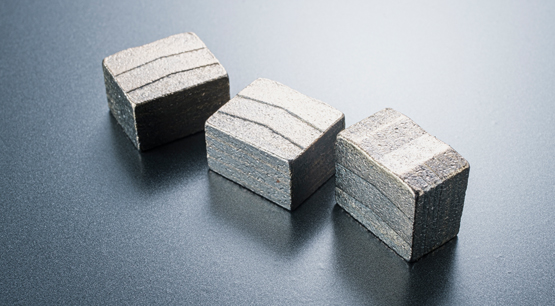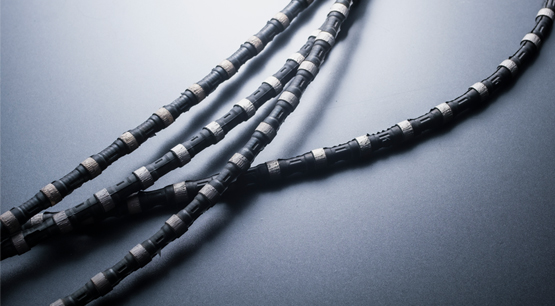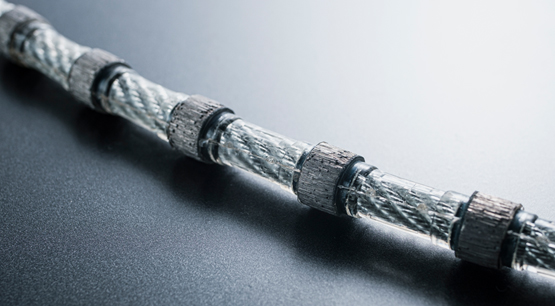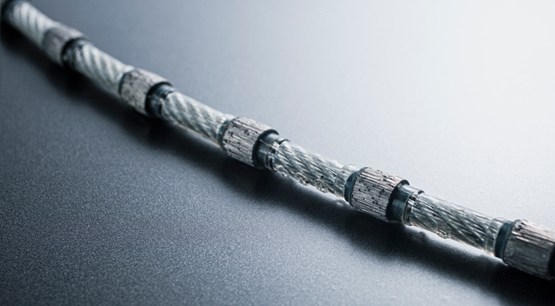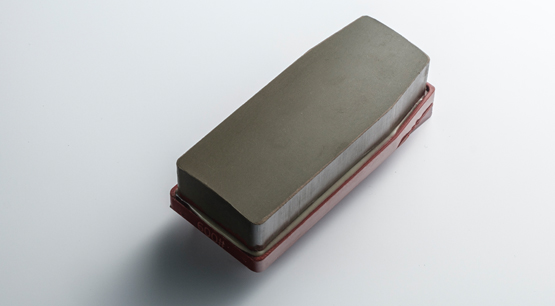Introduction
Diamond beads in wire saws are integral components used in cutting through extremely hard materials like concrete, stone, and metal. The hardness of these beads is critical as it determines their efficiency and durability. Testing the hardness of diamond beads involves various methods and techniques to ensure they meet the required standards for industrial applications. This article will explore the significance of diamond bead hardness, methods for testing, and practical applications of these tests.
Importance of Diamond Bead Hardness
- Cutting Efficiency: The hardness of diamond beads directly affects the cutting efficiency. Harder beads can cut through materials more quickly and with greater precision.
- Durability: Harder beads are more resistant to wear and tear, resulting in longer tool life and reduced maintenance costs.
- Quality Control: Consistent hardness in diamond beads ensures uniform performance across different batches, maintaining the quality of the final product.
- Cost-Effectiveness: Higher hardness reduces the frequency of replacements, making the cutting process more economical in the long run.
Methods of Testing Hardness
Testing the hardness of diamond beads can be approached through several established methods. Each method offers unique advantages and insights into the properties of the diamond beads.
Vickers Hardness Test:
- Principle: The Vickers test measures the hardness of a material by pressing a diamond indenter with a known force into the material's surface and measuring the size of the indentation.
- Procedure:
- Advantages: Provides precise and reproducible results; applicable to a wide range of materials.
- Limitations: Requires careful sample preparation and skilled operation; time-consuming for multiple samples.
- Prepare the diamond bead sample and mount it securely.
- Apply a predetermined load using a diamond indenter.
- Measure the diagonal length of the resulting indentation using a microscope.
- Calculate the Vickers hardness value (HV) using the formula:where is the applied load in kilograms-force (kgf) and is the average length of the diagonals of the indentation in millimeters (mm).
Rockwell Hardness Test:
- Principle: The Rockwell test measures hardness by applying a load to an indenter, which penetrates the material's surface, and then measuring the depth of penetration.
- Procedure:
- Advantages: Faster and simpler than the Vickers test; suitable for production line testing.
- Limitations: Less accurate for very hard materials; may not be suitable for small or irregularly shaped samples.
- Prepare and secure the diamond bead sample.
- Apply a minor load to the indenter and establish a zero reference position.
- Apply a major load and measure the depth of penetration.
- Calculate the Rockwell hardness number (HR) based on the depth of penetration.
Knoop Hardness Test:
- Principle: Similar to the Vickers test, the Knoop test uses an elongated diamond indenter to create an indentation, but it is more suited for testing brittle materials or thin coatings.
- Procedure:
- Advantages: Provides precise hardness values for brittle materials; less damage to the sample.
- Limitations: Requires meticulous sample preparation and accurate measurement.
- Prepare and secure the diamond bead sample.
- Apply a known load using a Knoop indenter.
- Measure the long diagonal of the indentation.
- Calculate the Knoop hardness number (HK) using the formula:where is the applied load in kgf and is the length of the long diagonal in mm.
Microhardness Testing:
- Principle: Microhardness tests, such as Vickers and Knoop, focus on very small volumes of material to determine hardness at the microscopic level.
- Procedure:
- Advantages: Suitable for testing small or thin samples; high precision.
- Limitations: Requires specialized equipment and expertise; time-consuming.
- Prepare the diamond bead sample with a polished surface.
- Use a microhardness tester to apply a small load to the indenter.
- Measure the resulting indentation under a microscope.
- Calculate the hardness value using the respective formulas for Vickers or Knoop tests.
Nanoindentation:
- Principle: Nanoindentation involves pressing a sharp indenter into the material's surface to measure hardness and other mechanical properties at the nanoscale.
- Procedure:
- Advantages: Provides detailed information about mechanical properties at the nanoscale; suitable for very small or thin samples.
- Limitations: Requires advanced equipment and expertise; can be expensive.
- Prepare the diamond bead sample with a smooth surface.
- Use a nanoindenter to apply a very small load and measure the resulting indentation depth.
- Analyze the load-displacement data to determine hardness and elastic modulus.
Practical Applications
Quality Assurance in Manufacturing:
- Routine Testing: Regular hardness testing during production ensures that diamond beads meet quality standards, preventing defective products from reaching the market.
- Batch Consistency: Testing samples from different batches verifies consistency in hardness, ensuring uniform performance.
R&D and Product Development:
- Material Selection: Hardness testing helps in selecting the appropriate materials for diamond beads, optimizing performance for specific applications.
- Process Optimization: Testing different processing parameters (e.g., sintering temperature, pressure) to achieve the desired hardness and improve product quality.
Failure Analysis:
- Investigating Failures: Hardness testing can help identify the causes of premature wear or failure in diamond beads, guiding corrective actions in the manufacturing process.
- Improving Durability: Insights from hardness testing contribute to the development of more durable diamond beads, enhancing the lifespan of wire saws.
Custom Applications:
- Specialized Requirements: Custom testing protocols can be developed to meet the specific needs of different industries, ensuring optimal performance in various cutting applications.
- Tailored Solutions: Hardness testing supports the creation of tailored solutions for unique challenges, such as cutting extremely hard or abrasive materials.
Conclusion
Testing the hardness of diamond beads in wire saws is crucial for ensuring their efficiency, durability, and overall quality. Various testing methods, including Vickers, Rockwell, Knoop, microhardness, and nanoindentation, offer different advantages and insights into the hardness of diamond beads. These tests play a vital role in quality assurance, product development, failure analysis, and meeting specialized industry requirements. By understanding and implementing the appropriate hardness testing techniques, manufacturers can produce high-quality diamond beads that meet the rigorous demands of cutting applications, ensuring reliable and cost-effective performance.




